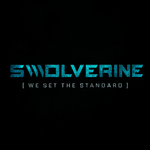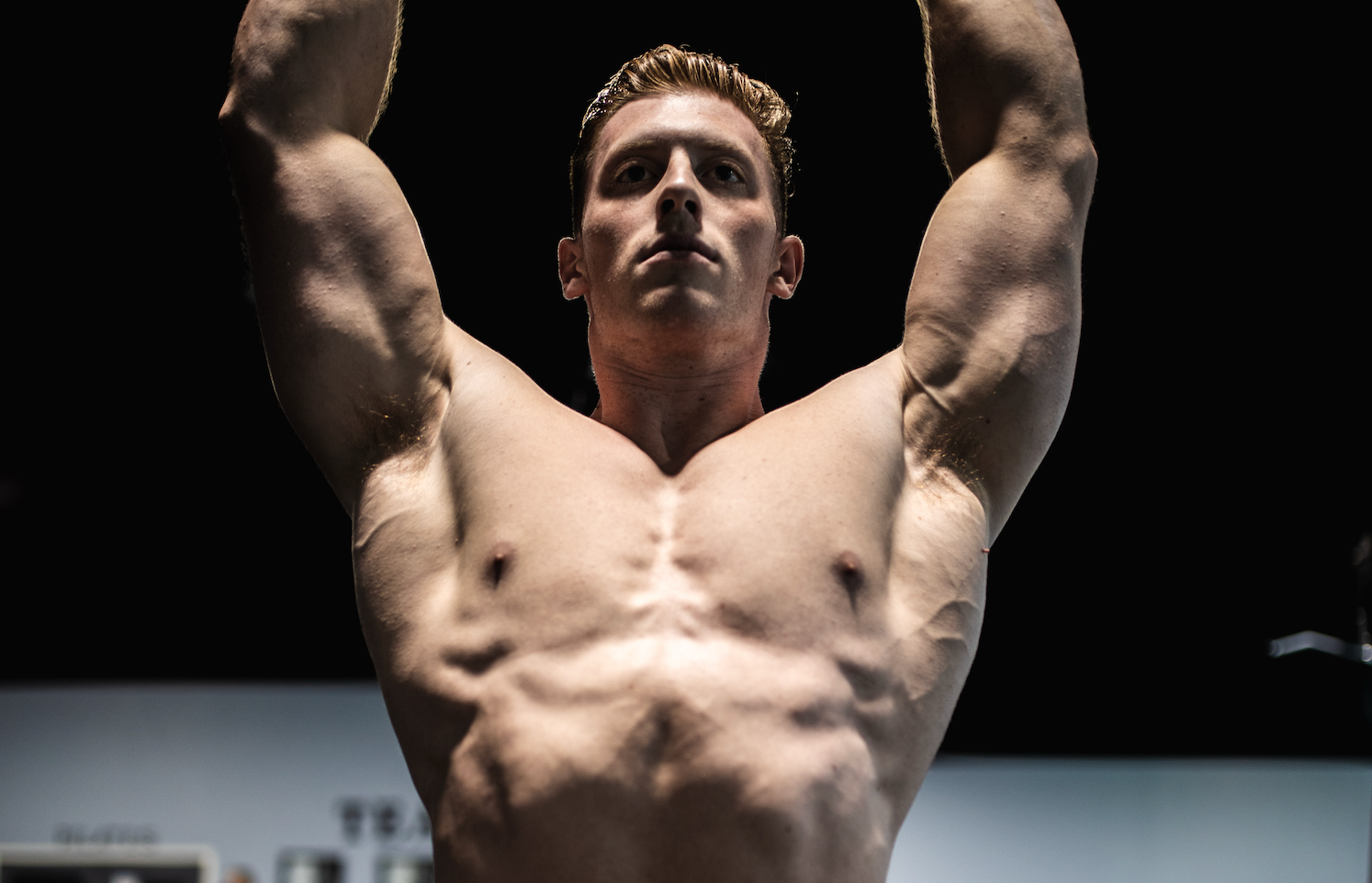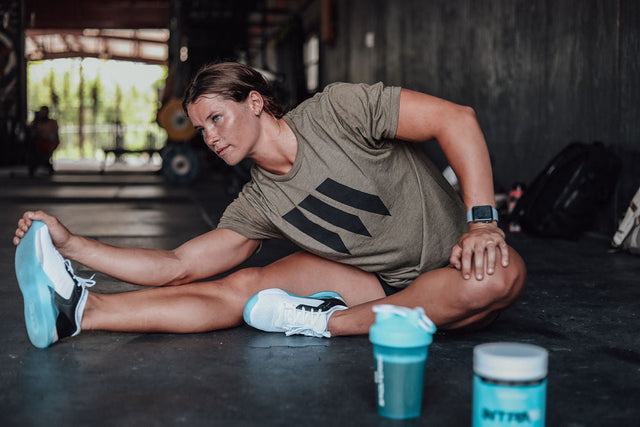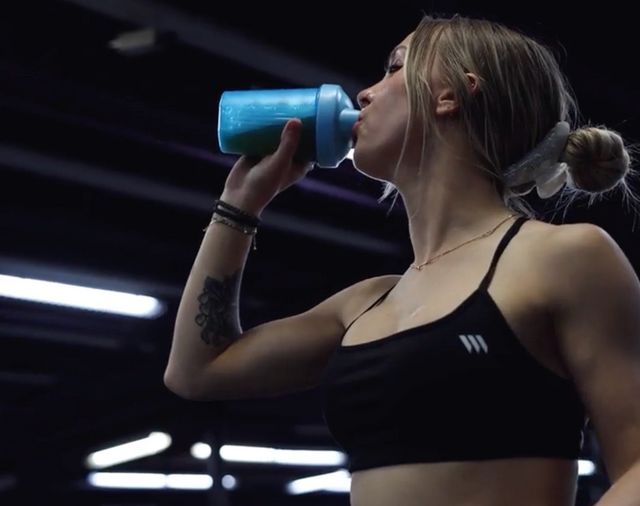For bodybuilders pushing through brutal training sessions, joint aches, soft tissue stress, and nagging tendon pain often come with the territory—especially after an intense steroid cycle. That’s where BPC-157 enters the conversation.
This powerful peptide has quickly earned a reputation in the physique world for its ability to accelerate recovery from joint injuries, heal connective tissue, and support the body during post-cycle repair. Whether you’re an enhanced athlete looking for off-cycle recovery or a natural lifter dealing with chronic inflammation, BPC-157 could be one of the most effective recovery tools available today.
In this guide, we’ll break down how BPC-157 works, why it’s become a favorite among bodybuilders, and how to use it effectively to protect your joints, rebuild tendons, and bounce back stronger than ever.
What Is BPC-157?
BPC-157 stands for Body Protection Compound-157, a synthetic peptide sequence derived from a naturally occurring protein found in human gastric juice. It consists of 15 amino acids and is part of a class of compounds known as pentadecapeptides, which have shown remarkable regenerative effects in preclinical studies.
While BPC-157 is not currently FDA-approved for human use, it is widely researched in the scientific community for its healing potential—particularly in tissues that are difficult to regenerate, such as tendons, ligaments, joints, and even internal organs. For bodybuilders, that healing potential has major implications during both training and post-cycle therapy (PCT).
→ Learn more about the compound in our introductory BPC-157 guide.
How BPC-157 Works: Mechanism of Action for Muscle and Tendon Repair
BPC-157 promotes healing and recovery by accelerating key biological processes that repair damaged tissue. Here’s how it works—especially in the context of muscle strain, tendon tears, and joint inflammation often experienced by bodybuilders:
→ Angiogenesis and Blood Flow
BPC-157 increases angiogenesis, the formation of new blood vessels from pre-existing ones. This improves blood flow to damaged tissue, allowing nutrients, oxygen, and immune cells to reach the injury site more efficiently, speeding up recovery (Gwyer et al., Frontiers in Physiology).
→ Collagen Synthesis
It stimulates fibroblast activity, which enhances collagen production—critical for rebuilding tendons, ligaments, and connective tissue after the intense strain of heavy lifts or post-cycle degradation (Chang et al., Molecules).
→ Anti-Inflammatory Action
BPC-157 has been shown to reduce pro-inflammatory cytokines and accelerate the healing of soft tissue injuries, which is key during intense training or after anabolic steroid use, when inflammation can spike dramatically.
→ Tendon-to-Bone Healing
Studies also show BPC-157 may help with enthesis repair—the critical tendon-to-bone interface—making it especially valuable for bodybuilders recovering from tendon tears or joint instability after heavy pressing or pulling movements.
For a deeper dive into how this peptide supports full-body healing, check out our full article on the science and benefits of BPC-157.
Why Bodybuilders Use BPC-157 After a Steroid Cycle
Anabolic steroids may promote size and strength—but they also carry a price. The rapid increase in muscle mass can outpace tendon and ligament adaptation, increasing the risk of soft tissue injuries. Post-cycle, users may also experience systemic inflammation, joint pain, and a decline in collagen synthesis due to suppressed endogenous hormones.
This is where BPC-157 shines for bodybuilders:
→ Joint and Tendon Repair Post-Cycle
After cycling off compounds like Testosterone, Trenbolone, or Winstrol, many athletes use BPC-157 to mitigate stress on tendons and joints, allowing for faster tissue repair without relying on NSAIDs or corticosteroids. It's often part of a strategic off-cycle healing protocol.
→ Supportive Recovery Without Hormonal Suppression
Unlike anabolic agents, BPC-157 does not suppress the HPTA (hypothalamic–pituitary–testicular axis), making it a non-hormonal recovery tool. That makes it ideal to use alongside compounds featured in your PCT stack, including Clomid, Nolvadex, or Aromasin.
→ Enhanced Healing While Maintaining Training
BPC-157 allows many athletes to stay in the gym while recovering. By accelerating the repair of microtears, strains, and inflammation, it helps users train around injuries without exacerbating them—critical for competitive lifters and physique athletes.
To build your own plan, check out our BPC-157 cycle guide for detailed dosage protocols.
Tendon and Ligament Support for Heavy Lifting
One of BPC-157’s most documented effects in animal studies is its ability to dramatically accelerate healing in tendon and ligament tissue—the very structures most stressed by heavy compound lifts like squats, deadlifts, and presses.
→ Collagen Production and Fiber Organization
BPC-157 promotes angiogenesis (formation of new blood vessels) and increases fibroblast activity, which plays a key role in the synthesis of collagen—the primary structural protein in connective tissue. This improves both tensile strength and elasticity, helping tendons adapt to load more efficiently.
→ Injury Prevention in Progressive Overload Training
Bodybuilders routinely push tissues beyond normal physiological stress through progressive overload. BPC-157 offers a preventive advantage, potentially reducing the risk of overuse injuries like tendonitis or muscle-tendon strains that could otherwise derail a training cycle.
→ Accelerated Recovery from Tendinopathy and Soft Tissue Damage
Animal models show that BPC-157 can restore injured tendons to near-normal histological structure, even in chronically injured states (Gwyer et al., Molecules).
When used as part of a comprehensive recovery protocol, especially post-AAS cycle or during periods of heavy training, BPC-157 may offer protective and reparative effects unmatched by conventional treatments.
→ For scientific breakdowns, visit our article on how BPC-157 works.
BPC-157 for Injury Recovery Without Time Off
One of the most frustrating setbacks for bodybuilders is being forced to take time off due to injury—especially when tendon or joint issues make lifting painful or risky. BPC-157 offers a unique advantage: it may promote healing while allowing continued training with less pain and inflammation.
→ Local Healing and Anti-Inflammatory Effects
Research shows that BPC-157 modulates inflammatory cytokines, such as TNF-α and IL-6, while stimulating growth factors like VEGF and FGF. This dual action may help reduce swelling and pain, enabling athletes to keep training while healing continues beneath the surface.
→ Systemic Benefits, Even When Administered Orally
Unlike many compounds that require injections to reach localized sites, BPC-157 has demonstrated systemic healing effects even when taken orally. This makes it versatile and accessible for bodybuilders treating multiple overuse injuries across the body.
→ Performance Continuity Post-Injury
Athletes using BPC-157 report returning to normal training volume and intensity faster than with rest alone, without the lingering deficits in joint mobility or tendon function that often follow NSAID-heavy recovery plans.
For an overview of administration strategies, including dosing and timing, see our complete BPC-157 dosage guide.
Off-Cycle Repair and Post-Steroid Support
After an anabolic steroid cycle, many bodybuilders experience lingering pain, stiffness, or minor soft tissue injuries that were masked by the powerful anti-inflammatory effects of AAS. This is where BPC-157 steps in—bridging the gap between muscle gains and joint recovery.
→ Post-Cycle Inflammation and Structural Weakness
Coming off steroids often exposes microtears and joint issues accumulated during the cycle. BPC-157 may help reduce post-cycle inflammation and stimulate repair of ligaments and tendons stressed during high-intensity training.
→ Tissue Rebuilding Without Hormonal Suppression
Unlike anabolic steroids or growth hormone, BPC-157 does not suppress natural testosterone or interfere with the hypothalamic-pituitary-gonadal axis. This makes it ideal during post-cycle therapy (PCT), especially when paired with Clomid, Nolvadex, or Aromasin.
→ Stacking for Optimal Off-Cycle Recovery
Bodybuilders often stack BPC-157 with TB-500 or CJC-1295/Ipamorelin to further enhance recovery during off-cycle repair phases. These combinations may accelerate healing of microtraumas while supporting lean muscle preservation and improved mobility.
To dive deeper into full post-cycle healing strategies, read our Ultimate Guide to a BPC-157 Cycle.
How to Use BPC-157 for Bodybuilding Recovery
Using BPC-157 effectively requires more than just understanding what it does—it also involves smart timing, proper administration, and knowing when to stack it with other compounds for synergistic effects.
→ When to Use It
Most bodybuilders incorporate BPC-157 in two key windows:
-
During Injury Rehab or Joint Discomfort: To accelerate tendon, ligament, or muscle recovery.
-
After a Steroid Cycle: To restore connective tissue integrity and support post-cycle inflammation and wear-and-tear.
→ Where to Inject It
BPC-157 is most commonly used as a subcutaneous or intramuscular injection.
-
Subcutaneous injection (under the skin) is ideal for systemic recovery.
-
Intramuscular injection near the injury site is preferred for targeted tissue repair.
→ Dosage Protocol
The standard BPC-157 dosage in bodybuilding is:
-
250–500 mcg per day, split into two doses (morning and evening).
-
Most cycles run for 2–4 weeks, though some extend up to 6 weeks based on severity of injury or recovery needs.
→ Best Practices for Results
-
Combine with collagen support like Hydrolyzed Collagen and gut repair peptides (especially post-steroid cycle).
-
Avoid NSAIDs (non-steroidal anti-inflammatories), as they may counteract some of BPC-157’s healing mechanisms.
-
Maintain high protein intake and support micronutrient repair with a Greens + Reds blend and magnesium/zinc stack like ZMT.
For a full breakdown of dosing options, protocols, and administration routes, explore our BPC-157 Dosage Guide.
BPC-157 After a Steroid Cycle: Why It’s a Smart Addition
Anabolic steroids like Testosterone, Trenbolone, or Winstrol help bodybuilders push beyond their natural limits—but they also place immense strain on tendons, ligaments, and soft tissues. While muscle tissue adapts quickly to increased load, connective tissue does not. This mismatch is a primary reason for injuries and chronic inflammation post-cycle.
BPC-157 offers a unique solution in post-cycle therapy (PCT) and beyond:
→ Connective Tissue Repair
Steroid use can degrade tendon integrity and create microtears under high load. BPC-157 has been shown to upregulate the formation of fibroblasts and angiogenesis (new blood vessels), accelerating tendon and ligament healing.
“BPC-157 accelerates the healing of ligaments, tendons, and muscle, especially at sites of mechanical stress” (Sikiric et al., Journal of Physiology).
→ Joint Pain and Inflammation Reduction
Steroids can suppress natural anti-inflammatory processes over time. BPC-157 helps restore balance and reduce pain in joints stressed from heavy training.
→ Ideal PCT Stack
While SERMs like Clomid or Nolvadex manage hormone recovery, BPC-157 addresses the physical damage of training and steroid use—something most PCT protocols overlook.
→ Synergy with Growth Peptides
Many bodybuilders stack BPC-157 with TB-500 for broader tissue regeneration or MK-677 to maintain muscle gains while healing.
Explore deeper PCT strategies in our guide to post-cycle recovery stacks.
BPC-157 Dosage for Bodybuilders
When it comes to dosage, bodybuilders typically follow research-backed protocols based on injury location, severity, and delivery method (injectable vs. oral). While no official human dosing guidelines exist, anecdotal use and rodent-to-human conversions help shape general best practices.
Injectable Dosage (Subcutaneous or Intramuscular)
→ Typical Range:
250–500 mcg per day
→ Administration:
-
Inject subcutaneously near the injury site or systemically (abdomen) for full-body support
-
Split doses (e.g., 250 mcg morning, 250 mcg evening) are common for sustained healing response
-
Often used for 2–4 weeks, then cycled off or tapered depending on recovery progress
“BPC-157 promotes tendon outgrowth, cellular survival, and healing when administered directly into or near damaged soft tissues” (Gwyer et al., Frontiers in Pharmacology).
Oral Dosage (Capsules)
While less bioavailable than injections, oral BPC-157 is often used for gut healing and systemic recovery:
→ Typical Range:
500–1,000 mcg per day (divided doses)
→ Use Case for Bodybuilders:
Ideal during post-cycle recovery, especially if GI health was compromised from oral steroid use or NSAIDs.
→ Learn more in our BPC-157 Forms Explained guide.
Risks and Side Effects of BPC-157
While many anecdotal reports from athletes and biohackers praise BPC-157’s healing potential, its safety profile isn’t fully established in humans due to the lack of long-term clinical trials.
→ Lack of Human Studies
Most research has been conducted in animal models. While results are promising, extrapolating dosage and safety to humans remains speculative. Clinical trials in humans are needed to confirm efficacy and long-term safety.
→ Unknown Drug Interactions
Because BPC-157 is not FDA-approved, there’s limited understanding of how it might interact with prescription drugs, anabolic steroids, or supplements. Athletes should consult a medical professional—especially during post-cycle therapy.
→ Injection-Related Risks
When using injectable BPC-157, risks include:
-
Infection at the injection site
-
Tissue irritation
-
Incorrect dosage due to inconsistent product purity in research-grade peptides
→ Purity and Sourcing Concerns
Not all peptides are created equal. Low-quality or mislabeled products sold online can pose serious health risks. Always use verified suppliers or trusted compounding pharmacies.
→ For more, read our full breakdown on BPC-157 side effects and safety.
Is BPC-157 Legal?
The legal status of BPC-157 varies based on region and intended use:
→ United States (FDA)
BPC-157 is not approved for human use by the FDA. It is classified as a research chemical, meaning it can be purchased for laboratory purposes but not legally sold for consumption, injection, or medical treatment.
→ WADA (World Anti-Doping Agency)
As of now, BPC-157 is not specifically listed on the WADA Prohibited List, but it may still fall under the category of “substances with similar biological effects.” Athletes competing under drug-tested organizations should use caution, as WADA can update its list annually.
“Although BPC-157 is not explicitly named on the Prohibited List, it may be considered prohibited under S0: Non-Approved Substances.” – USADA
→ International Status
In Australia, BPC-157 is classified as a Schedule 4 substance, requiring a prescription. In most other countries, it remains in a gray area—legal to possess for research, but not to market as a supplement or therapeutic.
Because of its unclear regulatory status, athletes should weigh the benefits against potential risks and test failures—especially when preparing for competitions or under a physician-monitored plan.
Conclusion: Should Bodybuilders Use BPC-157?
BPC-157 offers bodybuilders a unique edge when it comes to healing tendons, ligaments, and connective tissue, particularly after the strain of intense training or anabolic steroid cycles. Its potential for faster joint recovery, reduced injury downtime, and enhanced off-cycle repair makes it an attractive option in the recovery arsenal.
While human studies remain limited, the available animal research and anecdotal evidence suggest that BPC-157 may help:
→ Support tendon and ligament regeneration
→ Reduce inflammation and joint discomfort
→ Accelerate post-cycle healing after heavy anabolic use
→ Prevent soft-tissue injuries during high-volume training
Still, athletes should be cautious: BPC-157 is not FDA-approved, and sourcing high-purity peptides from reputable suppliers is essential. Additionally, those subject to drug testing should stay informed about its legal and WADA status, as usage may carry risks.
For best results, pair BPC-157 with a well-structured recovery cycle, support it with collagen protein and L-glutamine, and follow guidance in your side effects guide to use BPC-157 responsibly. When used correctly, BPC-157 may help extend your training longevity and performance potential without sacrificing joint health.







